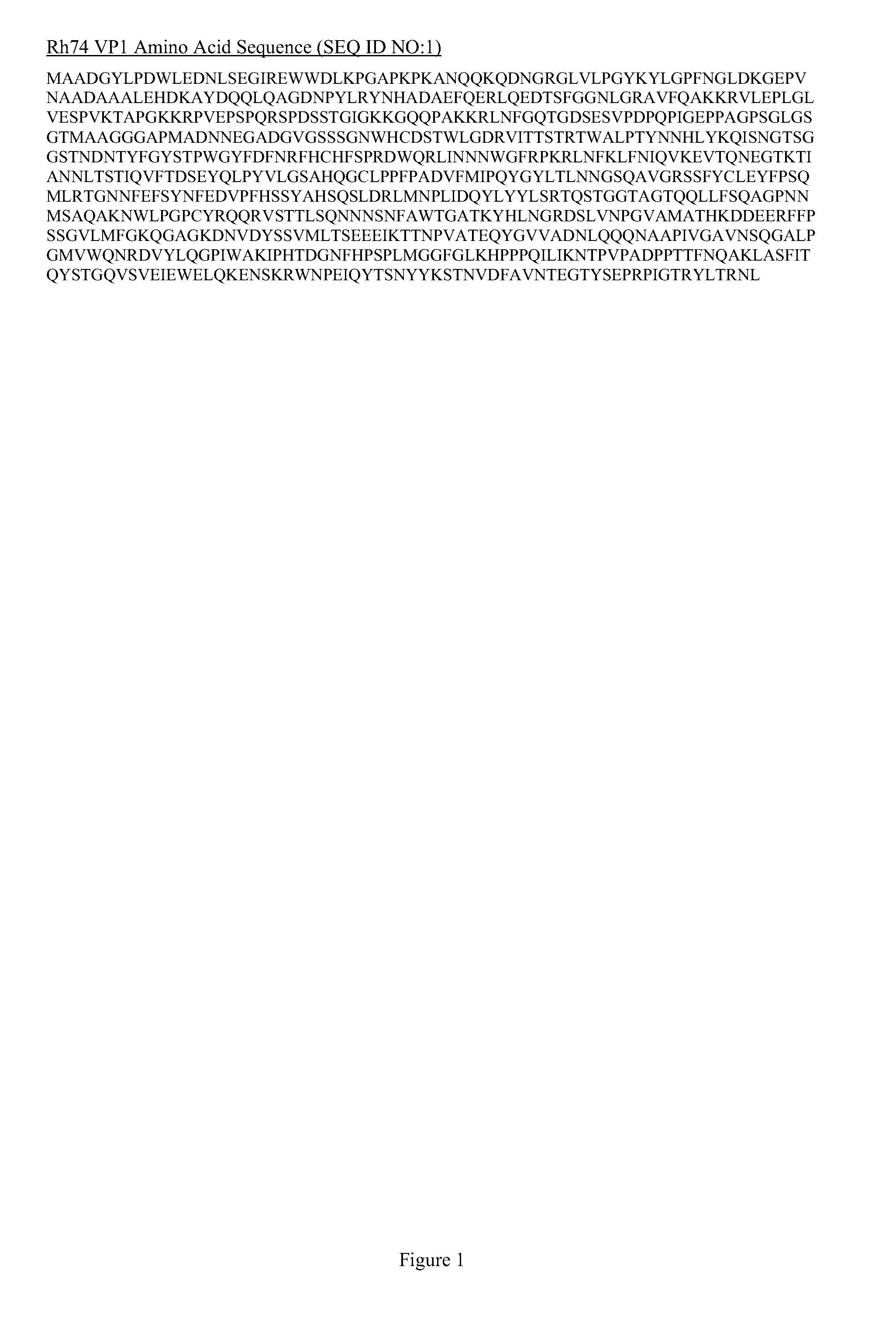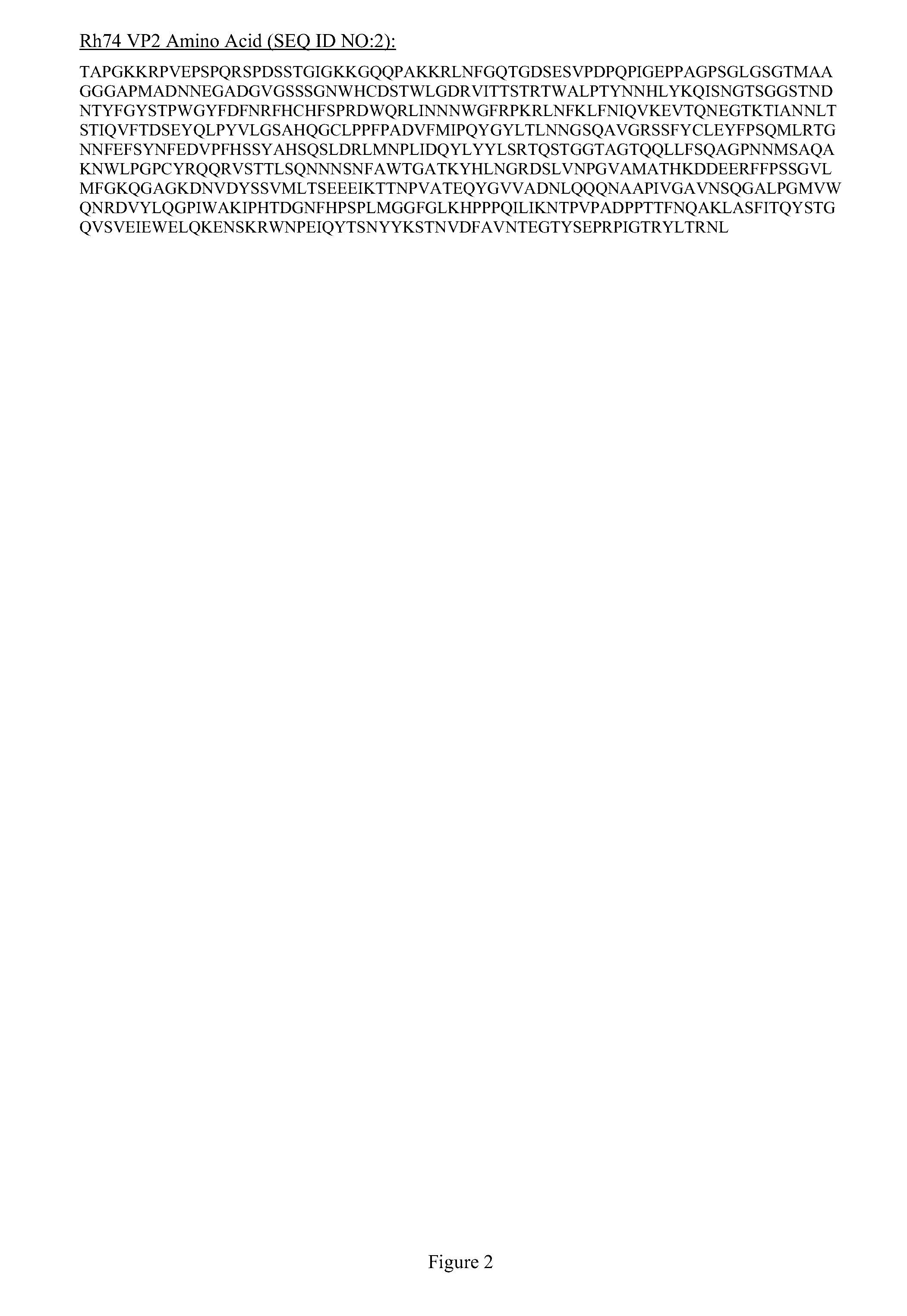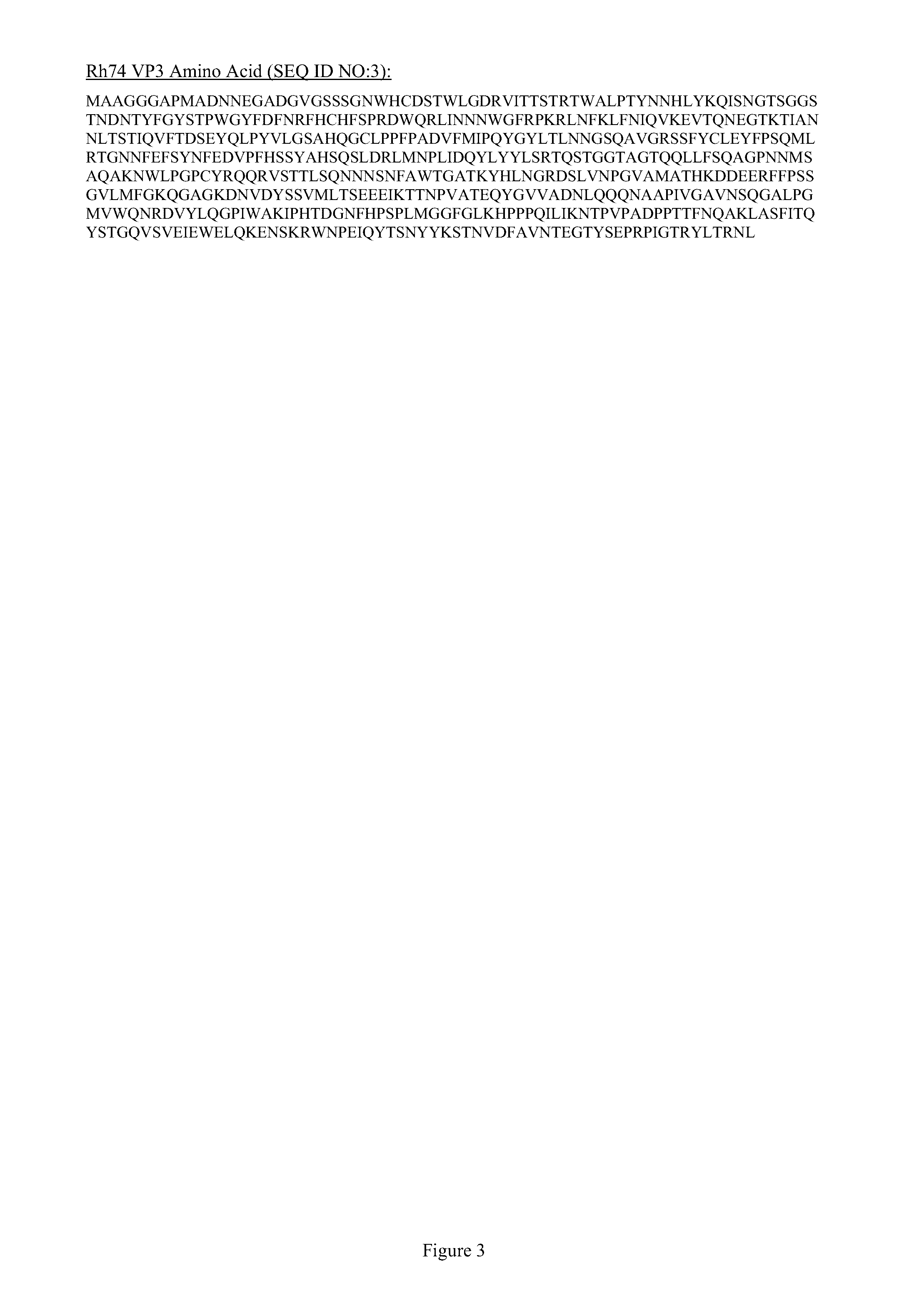Modified factor ix, and compositions, methods and uses for gene transfer to cells, organs, and tissues
a technology of modified factor ix and compositions, applied in the direction of drug compositions, peptide/protein ingredients, extracellular fluid disorder, etc., can solve the problems of need for repeated infusion, cost of treatment, risk of developing anti-therapeutic factor immune responses,
- Summary
- Abstract
- Description
- Claims
- Application Information
AI Technical Summary
Benefits of technology
Problems solved by technology
Method used
Image
Examples
example 1
Vector Design / Preparation
[0232]A novel Factor IX nucleic acid encoding a high specific activity human factor IX protein having the 338L Padua variant (Simioni P, et al., N Engl J Med 2009, 361:1671) was designed (“FIX 39-Padua”; SEQ ID No:10; FIG. 10). FIX39-Padua is completely devoid of CpG dinucleotides in the FIX coding and intronic sequences. For comparative testing, FIX19 (Mingozzi et al. Sci. Transl Med. 2013) was prepared and modified to include the FIX Padua, to rule out any potential confounding effects resulting from the FIX Padua (“FIX 19-Padua”; SEQ ID NO:11; FIG. 11).
[0233]A plasmid (“pAAV-ApoE_hAAT-FIX39”; 11125 bp; SEQ ID NO:12; FIG. 12A) was synthesized and included the FIX39-Padua expression cassette and the elements described in Table 2. A map of pAAV-ApoE_hAAT-FIX39 is shown in FIG. 13.
TABLE 2pAAV-ApoE_hAAT-FIX395′ AAV2 ITRSEQ ID NO: 13Enhancer (HepaticSEQ ID NO: 14Control Region)hAAT promoterSEQ ID NO: 155′ UTRSEQ ID NO: 16FIX39-Padua CDSSEQ ID NO: 10(FIG. 10)Int...
example 2
In Vitro AAV Variant 4-1 Transduction
[0236]Primary hepatocytes from cynomologous macaque and human origin were transduced with the 4-1 variant capsid (SEQ ID NO:4) expressing luciferase at four different multiplicities of infection (MOI) ranging from 500 to 62,500 vector genomes per cell. Seventy-two hours after transduction, luciferase expression was analyzed. As shown in FIG. 16, the ratio of transduced human hepatocytes relative to non-human primate hepatocytes ranged from 0.8 to 1.5, depending on the MOI used. These data generated in vitro appear to be consistent with previous observations in vivo when comparing expression of coagulation factor IX in cynomolgus macaques and human subjects.
example 3
Potency Study
[0237]A study was conducted to evaluate the potency of AAV-FIX39-Padua versus AAV-FIX19-Padua in mice. Groups of 5 mice were injected at 8-10 weeks of age with either 1×1011 or 1×1012 vg / kg of AAV-FIX39-Padua and AAV-FIX19-Padua. Following vector administration, blood was collected by retro-orbital bleeding using heparinized capillary tubes; plasma was isolated by centrifugation at 9000 rpm for 10 minutes at 4° C. and stored frozen at −80° C. until assayed.
[0238]Plasma collected was used to evaluate hFIX transgene expression. Human FIX levels in plasma were measured using an ELISA kit (Affinity Biologicals, Ancaster, ON, Canada).
[0239]Activity levels of human FIX were measured by activated partial thromboplastin time (aPTT) assay. The aPTT assay was performed by mixing sample plasma in a 1:1:1 volume-ratio with human FIX-deficient plasma (George King Biomedical, Inc) and aPTT reagent (Trinity Biotech), followed by a 180s incubation period at 37° C. Coagulation was initi...
PUM
| Property | Measurement | Unit |
|---|---|---|
| Fraction | aaaaa | aaaaa |
| Fraction | aaaaa | aaaaa |
| Fraction | aaaaa | aaaaa |
Abstract
Description
Claims
Application Information
 Login to View More
Login to View More - R&D
- Intellectual Property
- Life Sciences
- Materials
- Tech Scout
- Unparalleled Data Quality
- Higher Quality Content
- 60% Fewer Hallucinations
Browse by: Latest US Patents, China's latest patents, Technical Efficacy Thesaurus, Application Domain, Technology Topic, Popular Technical Reports.
© 2025 PatSnap. All rights reserved.Legal|Privacy policy|Modern Slavery Act Transparency Statement|Sitemap|About US| Contact US: help@patsnap.com



